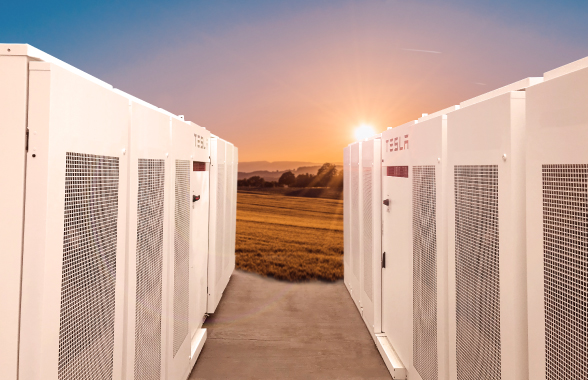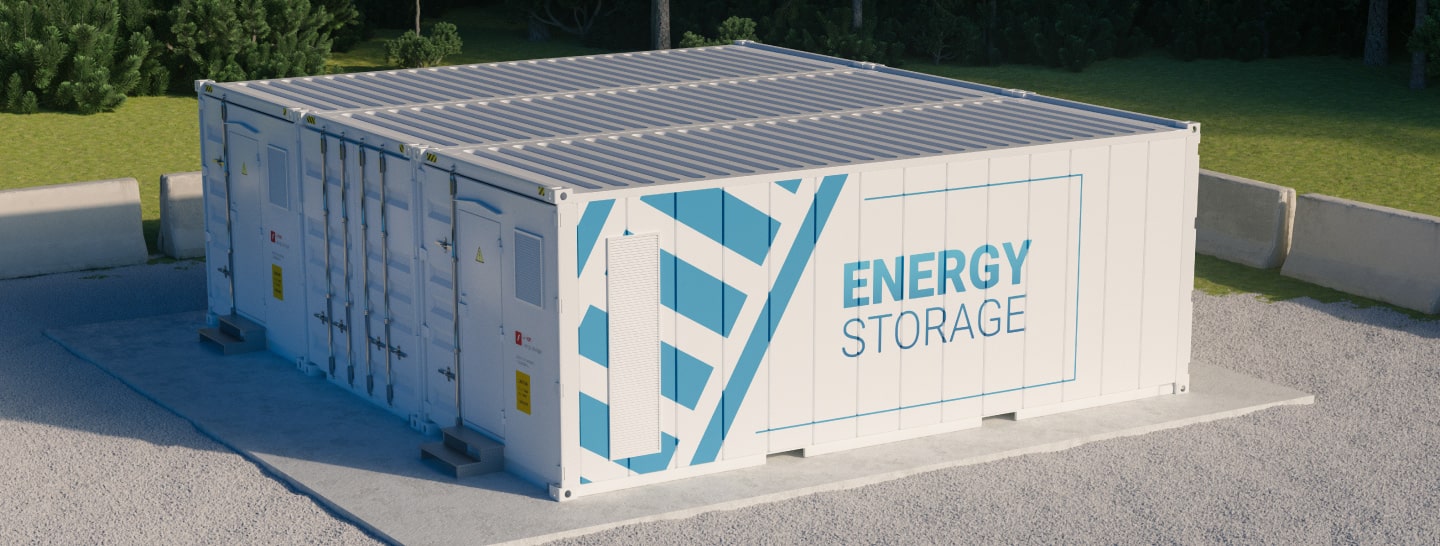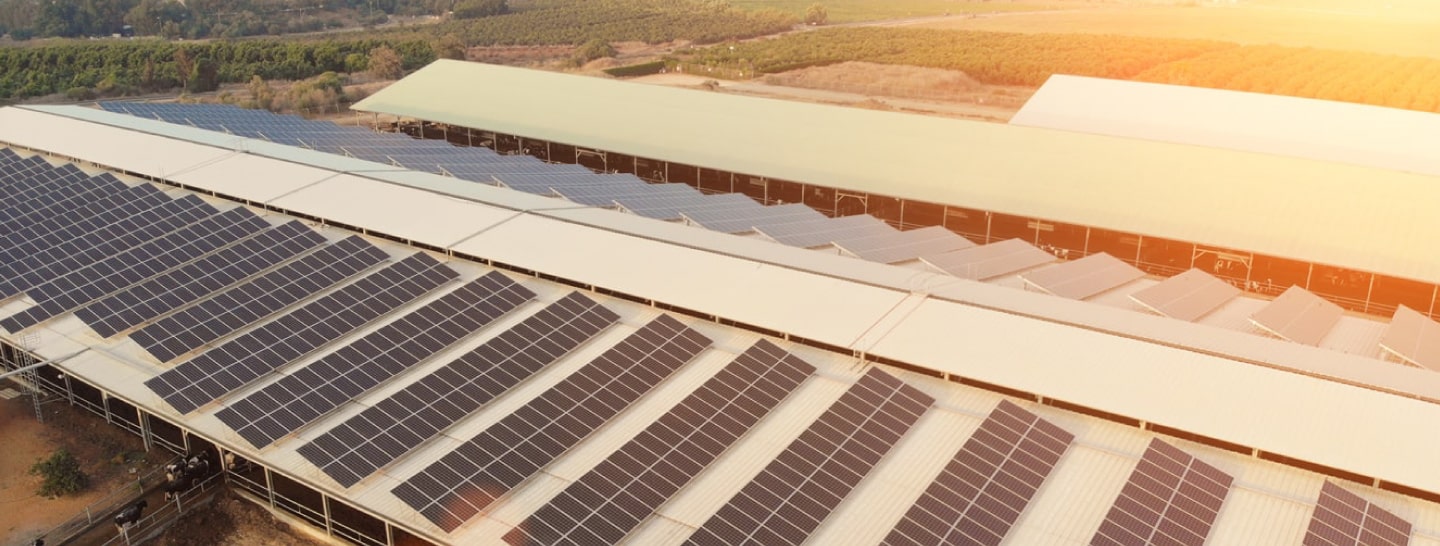Energy can be stored in batteries for when it is needed. The battery energy storage system (BESS) is an advanced technological solution that allows energy storage in multiple ways for later use. Given the possibility that an energy supply can experience fluctuations due to weather, blackouts, or for geopolitical reasons, battery systems are vital for utilities, businesses and homes to achieve a continual power flow. A battery energy storage system is no longer an afterthought or an add-on, but rather an important pillar of any energy strategy, especially any energy strategy that makes use of renewable solar power. The sun is a wonderful energy engine, but it has one, significant limit: no sunshine, no power production. By combining battery energy storage with PV solutions, the batteries can mitigate the intermittent nature of renewable power by storing solar power produced during the day for nighttime use, thus guaranteeing a steady supply of power at all times.
How does a battery energy storage system work?

The operating principle of a battery energy storage system (BESS) is straightforward. Batteries receive electricity from the power grid, straight from the power station, or from a renewable energy source like solar panels or other energy source, and subsequently store it as current to then release it when it is needed. When combined with software, a BESS battery becomes a platform that couples the energy storage capacity of batteries with the intelligence needed to deliver advanced management of energy consumption by harnessing AI, Machine Learning and data-driven solutions. This makes batteries a tool in the effort to offset climate change, because they enable a more flexible way of using energy that lets the user adapt to dips and peaks in demand and supply.
Overall, battery energy storage systems foster the deployment of renewable sources, thereby helping reduce carbon emissions and even deliver lower costs for businesses and households.
BESS: main applications
Battery storage can be used in many ways that go beyond the simple emergency backup in the event of an energy shortage or blackout. Applications differ depending on whether the storage is being used for a business or a home.
For commercial and industrial users, there are several applications:
- Peak shaving, or the ability to manage energy demand to avoid a sudden short term spike in consumption
- Load shifting, which allows businesses to shift their energy consumption from one time period to another, by tapping the battery when energy costs more
- Flexibility, whereby customers can reduce their site’s grid demand at critical times – without changing their electricity consumption. Energy storage therefore makes it a lot easier to participate in a Demand Response program and save on energy costs

- Microgrids rely on batteries as a key component, because these grids need energy storage to enable them to disconnect from the main electricity grid when needed
- Integration with renewable energy sources, since batteries guarantee a smooth and continuous electricity flow in the absence of the availability of power from renewable.
Residential users benefit from application of energy storage system by:
- Self consumption, since residential users can produce solar energy during the daylight hours and then run their appliances at home at night
- Emergency backup in the event of a blackout
- Going off the grid, or detaching completely from an electrical or energy utility
Advantages of battery energy storage system
The advantages of using battery storage technologies are many. They make renewable energy more reliable and thus more viable. The supply of solar and wind power can fluctuate, so battery storage systems are crucial to “smoothing out” this flow to provide a continuous power supply of energy when it's needed around the clock, no matter whether the wind is blowing or the sun is shining. Plus, they can protect any user from grid fluctuations that could compromise energy supply. Here are some of the advantages of battery storage:
- Environmental gains: installing a battery storage system in a home or businesses powered by renewable energy reduces pollution, thereby contributing to the energy transition and combating the effects of global warming.
- Lower energy costs: storing low-cost energy and consuming it during peak periods when electricity rates are higher allows a user to shift consumption and avoid higher charges, saving money. The savings are magnified when combined with solar power, which is free.
- Less dependent on the grid: battery storage systems guarantee a continuous energy supply, even at times when the energy grid is unstable due to peaks in demand or extreme weather.
- “Always on” supply: the sun is not always “on.” A battery storage system works round the clock, and therefore compensates for any fluctuations in solar energy supply by storing any excess power in the system.
- Resilience: a battery storage system provides emergency backup in the event of a power outage, guaranteeing business continuity.
What are the main types of battery energy storage systems?
Battery energy storage systems come in essentially two varieties: more consumer-facing “Behind-the-Meter” (BTM) systems, also referred to as “small-scale battery storage”, which include residential-level PV plants and battery storage units that help reduce stress on the public grid when - for example - the sun isn’t shining and solar power can’t be produced; and “Front-of-the-Meter” (FTM) systems, which are essentially to be found on the utility side of the energy distribution equation and include large-scale energy production and storage facilities, like power plants, solar parks and large-scale energy storage systems. In more detail:
Behind-the-Meter systems are installed on the user’s premises and are typically smaller than Front-of-the-Meter systems. A BTM’s main function is to improve the stability of its owners energy supply and cut costs, but if the local regulatory framework allows for it, the batteries can also supply energy back into the grid and thereby become an additional revenue stream.
Front-of-the-Meter systems are larger and directly connected to the power grid and usually therefore belong to a utility, helping it solve network congestion issues or as an alternative to building new power lines.
How long does a battery energy storage system last and how to give it a second life?
Most energy battery storage systems last between 5 to 15 years. As part of the ecosystem of solutions for the energy transition, battery energy storages are tools to enable sustainability and, at the same time, they themselves must be fully sustainable. The reuse of batteries and recycling of the materials they contain at the end of their life are all-around sustainability goals and an effective application of Circular Economy principles. Recovering an increasing quantity of materials from batteries and giving them a second life leads to environmental benefits, in both the extraction and disposal stages. Battery reuse also delivers economic benefits.

Can battery storage systems be integrated with a distributed generation system?

Enel X battery storage systems come equipped with our DER.OS optimization software, which is designed to work with all kinds of distributed energy resources and can easily be integrated into existing systems, such as solar photovoltaic systems. Regardless of whether a business already has such systems up and running in its facilities or needs to integrate them with a battery storage system, Enel X can create an effective solution for all energy scenarios.











